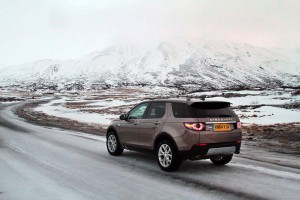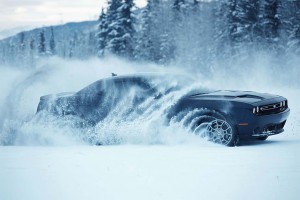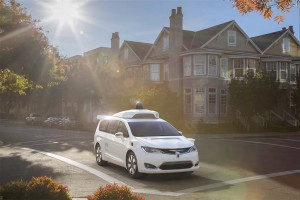There are already hundreds of autonomous prototypes cruising the nation’s roadways, and that number could soon climb into the thousands, thanks to a bill rapidly moving through Congress. But, for now, the vast majority of those vehicles are operating in warm weather climes like Phoenix and Silicon Valley.
The real challenge will be finding ways to make autonomous and fully driverless cars and trucks function in cold weather environments, experts stress, where things like lane markers may be obscured by road and ice.
So, Waymo, the Google spinoff generally considered one of the leaders in self-driving technology, says it will begin testing in Michigan over the winter using some of its newest models, specially modified versions of the Chrysler Pacifica hybrid.
“Our Chrysler Pacifica minivans are our most advanced self-driving vehicles to date, and testing in snow, sleet and ice will help further hone our driving capabilities,” Waymo CEO John Krafcik said in a statement. A one-time Ford engineer, Krafcik noted that, “Having lived through 14 Michigan winters, I’m confident that there are few better places that will prepare our self-driving cars for winter conditions.”

The lack of lane markers is one challenge on snowy roads, but sensors may also be confused about whether the road is snowy or icy.
(Senate set to clear roadblocks, authorize widespread testing of autonomous vehicles. Click Here for the latest.)
The first wave of semi-autonomous vehicles has just begun rolling out. Vehicles like the 2018 Mercedes-Benz S-Class, Volvo XC90, Tesla Model S and Audi A8 rely on a “sensor fusion,” including radar and cameras, to look for other vehicles, road signs and lane markers. They are generally capable of operating on limited-access highways, often for just short periods of time, though the new A8 can run fully hands-free at speeds up to 37 mph in heavy traffic on highways.
To go the next step is a big challenge. Waymo and most other players in the field are adding a technology known as Lidar, essentially a vision system using high-definition 3D lasers, to get an even more accurate view of the world around the vehicle. And they also add high-def mapping that is far more accurate than the in-car navi technology currently in use, typically capable of locating a vehicle to within a couple of inches.
The trick will be to integrate all these new technologies so that an autonomous vehicle can operate when part of the puzzle is missing – as happens on a snowy road where lane markers and road signs may be obscured. Even a heavy rain in a warmer environment, never mind fog, can play havoc with current technology.
(Autonomous trucks could cost the jobs of millions of U.S. drivers. Click Here for the story.)
Cracking the code on operating in all weather conditions would give a company like Waymo a serious first-mover advantage.
Most automakers are now working on their own autonomous and driverless technologies, but industry analysts believe that there will eventually be a shake-out and some – perhaps many – manufacturers will eventually turn instead to suppliers like Waymo, as well as Delphi and Continental, for their technology.
At one point, Waymo had considered actually getting into automotive manufacturing, but Krafcik has ruled out that idea considering the high costs and risks.
“We’re aiming to give our technology more practice driving in snow, sleet and ice,” Krafcik wrote in a new blog post. This type of testing will give us the opportunity to assess the way our sensors perform in wet, cold conditions.”
Not only do those sensors need to figure out where the vehicle is – and where other vehicles might be, but they also have to understand what is happening on the road itself, Krafcik previously told TheDetroitBureau.com. It is difficult to determine whether a vehicle is dealing with snow, ice or sand. All reduce traction, but each must be handled in a different way.
Like many of its competitors, Waymo is hoping to get its first fully autonomous vehicle – one that could operate in most or all weather conditions and on local, as well as limited-access roads – early in the coming decade. It is already running a series of pilot programs around the country, among other things using some of its Chrysler Pacifica Hybrids for a ride-sharing service in the Phoenix area.
(Delphi makes big investment in autonomous technology with $450m purchase of nuTonomy. Click Here for more.)



From the first picture it looks like winter weather can take its toll on hubcaps…or is that an illusion.